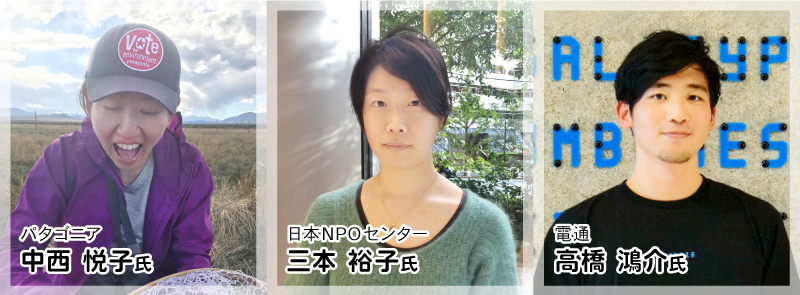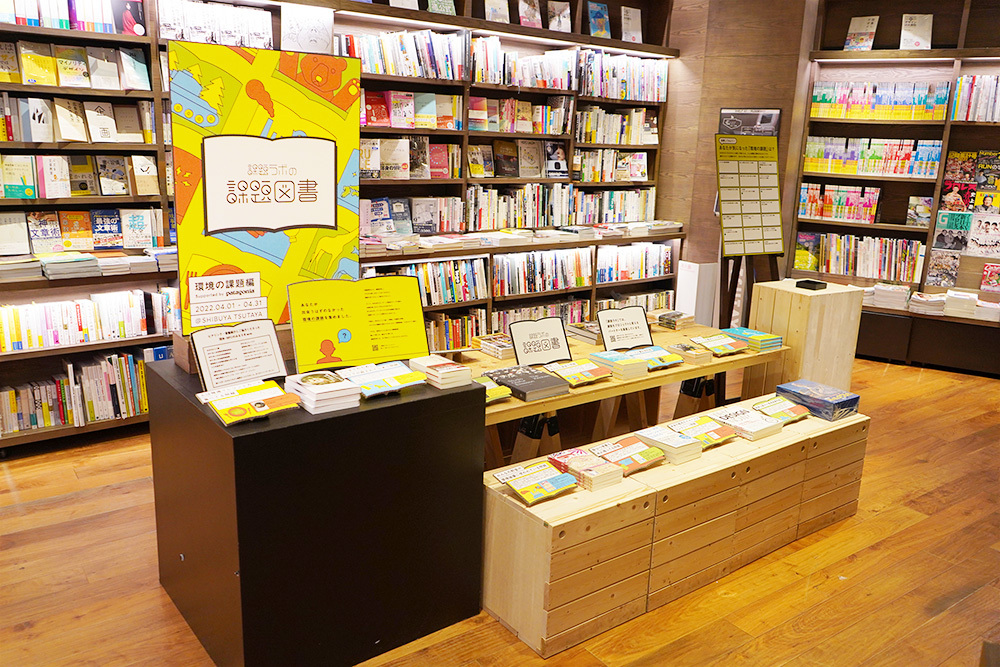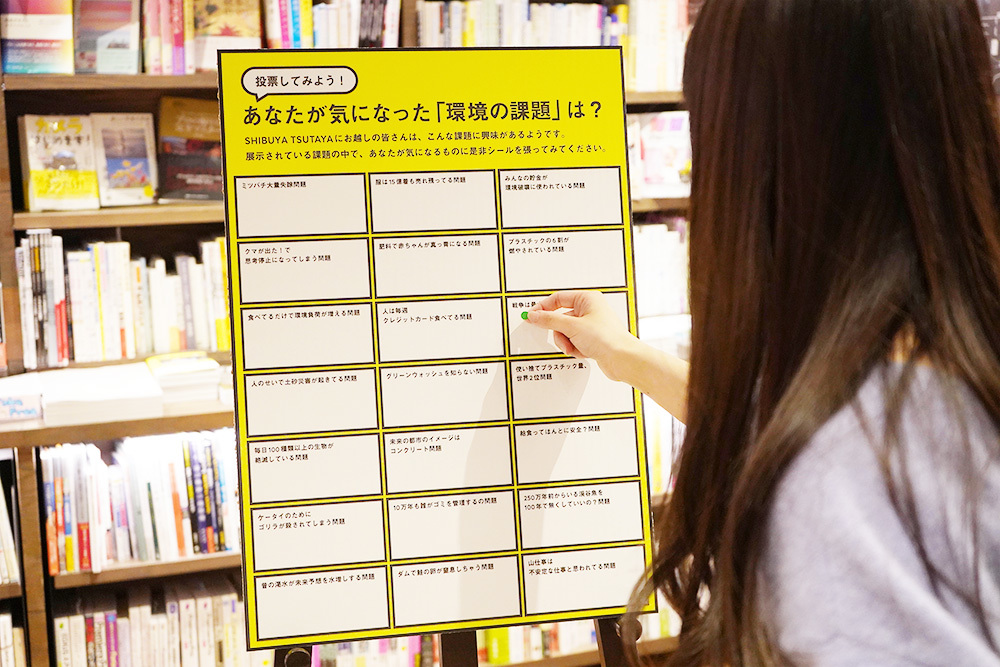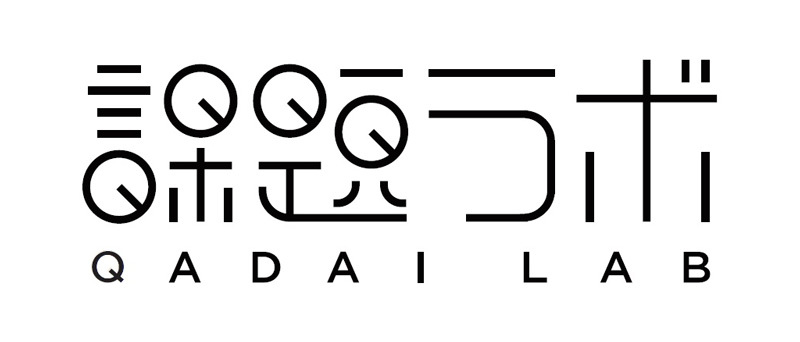Takahashi: "The Issue Lab's Issue Books - Environmental Issues Edition" is an exhibition event planned by Issue Lab members and created together with Patagonia. The exhibition introduced approximately 30 "environmental challenges" selected from the 40 collected issues, along with "challenge books" designed to deepen understanding of each issue. These were developed in consultation with environmental organizations supported by Patagonia. Today, joined by Mr. Nakanishi from Patagonia, who also spoke at the talk event, we'll explore several challenges and consider how we can engage with environmental issues. First, Mr. Nakanishi, please introduce yourself.
Nakanishi: I oversee the Activism Team within Patagonia Japan's Environment and Social Department. As an Activism Coordinator, I work with stakeholders both inside and outside the company to address social issues, implementing various campaigns and programs aimed at finding solutions. Each Patagonia retail store has a key person called an Activism Lead. We constantly share the local challenges each store faces, driving forward the activities of the entire Japan branch. Personally, I don't see myself as an expert on social issues. Instead, I work every day thinking about what I can do as one person living on this planet and as part of society.
Takahashi: That's a very interesting approach. I also deeply resonate with the mindset of thinking not as an expert, but as an individual. For myself, precisely because I don't know the details of social issues, I thought introducing books related to those issues together could create an opportunity to learn more deeply, which led to this exhibition project. And since the theme is the environment, I really wanted Patagonia's cooperation, so through Mr. Sanbon's introduction, I met Mr. Nakanishi. What was your impression when I first proposed this project?
Nakanishi: Well, seeing how the Japan NPO Center, starting with Mr. Sanbon, supports the environmental groups we back from a different angle and actually takes action to change society, I figured if they proposed something, it must be important for society (laughs).
Mitsumoto: Thank you (laughs).
Nakanishi: On the other hand, I was a bit concerned that phrasing it as "the XX problem" might make some people perceive it as too difficult. However, after hearing the details, I understood it was about proposing a new perspective – essentially taking a half-step forward from where we are now. I felt it could create an entry point for people who aren't very familiar with environmental issues or find them daunting, and I thought it was a very good project.
In reality, those actively tackling environmental issues often pour all their energy into solving immediate problems. It's frequently difficult for them to also dedicate time to activities that raise awareness among those not yet familiar with the issues. I think having entities that take on that role is incredibly important.
Mitsumoto: Particularly valuable this time was the opportunity to develop the theme alongside the NPO supported by Patagonia. Their meticulous guidance, down to every word and nuance, allowed us to uncover a profound environmental issue.

The "Challenge Lab QADAI BOOK: Environmental Issues Edition," created by Challenge Lab with the cooperation of Patagonia Japan and Patagonia's environmental grant recipient organizations.
Sometimes, action toward solving an issue can emerge from a single photo book
Takahashi: I'd like to introduce a few particularly memorable challenges from the ones exhibited at SHIBUYA TSUTAYA. Mr. Sanbon, what do you think?
Sanbon: "The problem of increased environmental impact from what we eat." Since about 60% of Japan's food is imported, the CO2 emissions generated just during transportation are enormous. Furthermore, the grains cattle eat require water, and vast amounts of forest are being cleared for farmland expansion and grazing. In other words, our food choices significantly impact environmental burden.
Takahashi: To address this issue, the exhibition featured a recipe book called "Studio Olafur Eliasson Kitchen." It showcases experimental vegetable dishes created in the shared kitchen of a contemporary artist's studio. Simply saying "what we eat affects environmental impact" might not resonate, but picking up this book reveals, through the familiar theme of recipes, the many food choices available to us.
Sanbon: Also, this time we asked visitors to vote for the issue that concerned them most. The one that received the most votes was "the problem of gorillas being killed for cell phones." Cell phones use a material called tantalum, a type of rare earth metal. In the Congo, wild gorillas are being killed because they are seen as obstacles to tantalum mining. In recent years, cell phones made with metals mined with consideration for human rights and the environment have also been sold in Europe.
Takahashi: I was surprised that an issue could arise between two seemingly unrelated things like "mobile phones" and "gorillas." We introduced the book "The Truth About Africa's Economy" alongside this issue. While it's not a genre people usually read, some picked it up because of the issue.
Nakanishi: There really are so many issues with brilliant angles, aren't there? The one I want to highlight is "The Problem of Past Droughts Inflating Future Projections." This issue involves the Ishioki Dam construction project proposed nearly half a century ago in Sasebo City, Nagasaki Prefecture. Despite ongoing population decline, the project persists, pitting residents against the administration. To accompany this issue, I introduced the photo book "By the Banks of the Ishioki River" by photographer Yoshiaki Murayama. It captures the landscapes of the Kobaru district in Kawatana Town, the planned dam site, and the 13 families living there.
Takahashi: It's a photo book that draws you in with its incredibly beautiful rural landscapes. When you hear a book is about environmental issues, you tend to imagine thick, difficult books. This time, we consciously selected books that offer accessible "entry points," like photo books and manga.
Nakanishi: In fact, a middle school student in Sasebo City saw Murayama's beautiful photograph of fireflies in the newspaper. This led to the student winning a prize in a local newspaper essay contest, sparking an interest in environmental issues. Now, while studying regional revitalization at university, the student participates in the citizen-led initiative "Flowers Over Dams," which addresses the Ishiki Dam project. Recently, they also contributed a wonderful essay to our website. As this example shows, a single photo book can spark action toward solving problems.
Collaborative creation with NPOs tackling social issues advances corporate social activities
Takahashi: What really struck me was the issue that "60% of Japanese people are unaware of their own power." According to a survey by the International Social Survey Program (ISSP), 60% of Japanese respondents answered, "I think that even if I alone do something for the environment, it won't make a difference unless others do the same." I realized that precisely because environmental improvements are often invisible, it can be difficult to feel a tangible sense of impact.
Sanbon: It's true that it's hard to feel a tangible impact when you're alone. In such cases, I recommend joining someone else's initiative. For example, consider this story: Someone started picking up trash along a river littered with garbage. They began alone, but gradually, the circle of participants grew, and the river was beautifully restored. The people who joined the cleanup formed an NPO, and now they even run cruising operations on that river. I believe that gaining companions allowed them to share the sense of accomplishment and sparked compelling new ideas.
Nakanishi: Collaborating with like-minded people who share a common purpose is incredibly important. Even if someone can't participate at a certain time, say due to life changes, the activity can continue if others are available. Today, there are robust platforms where everyone can contribute at their own pace and within their capacity. People can work together or separately, depending on their circumstances. This kind of flexible connection might actually be well-suited to our times.
Takahashi: I see. While editing the issues gathered this time, I realized that while each issue seems distinct, many are actually interconnected. For instance, I thought NPOs could find new angles for tackling issues by identifying areas of shared empathy and collaborating on them.
Nakanishi: That's right. This project taught me anew that re-editing issues can reveal new insights. For instance, reframing mining issues in Africa as "gorillas being killed for our cell phones" – a perspective that instantly grabs attention – might encourage people who were previously unaware to look into it, post about it on social media, or donate to support the cause. I sensed huge potential in that.
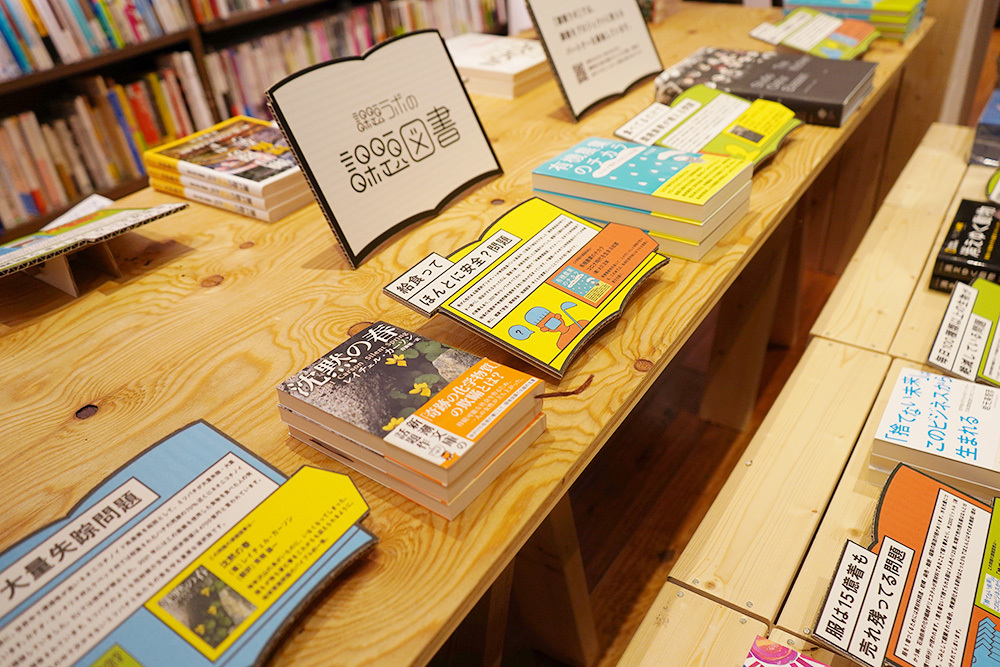
Mitsumoto: Through this activity, I was reminded just how meticulously and earnestly NPOs engage with social issues. That's precisely why Patagonia, which amplifies issues not yet widely recognized alongside NPOs, is such a vital presence. I believe if more companies like this emerge, society as a whole will become more sensitive to these challenges, empowering us to shape our own future.
Nakanishi: Supporting and co-creating with NPOs, which excel at identifying societal challenges, can be an effective strategy for advancing corporate social initiatives. We also believe that "true problem-solving can only be achieved through powerful grassroots action," which is why we established our " Environmental Grant Program " for organizations engaged in environmental protection activities. The application deadline for the 2022 program is August 31st. We encourage interested NPOs to review the guidelines and apply.
Takahashi: That's a wonderful initiative. Earlier, you mentioned Patagonia as a voice for change. At the Challenge Lab, we also aim to gather outstanding efforts by NPOs and bring together like-minded supporters. In that sense, collaborating with Patagonia, a pioneer in this field, has been incredibly inspiring. We'd be delighted to continue working together. Thank you for today.
< Challenge Lab >
Established in 2018 through collaboration between Dentsu Inc. and the Japan NPO Center. This lab operates with the goal of transforming the relationship between NPOs and corporations from one of "supported and supporting" into a "collaborative entity aiming to solve social issues together."
Guided by the concept "Problem discovery precedes problem solving. Hints lie in the field, not the boardroom," it connects with cutting-edge frontline initiatives addressing social issues nationwide.
It currently provides services in both consulting and business development.
- Communication/Branding (Sustainable + Field Perspective)
- Product/Business Development / Platform Development (e.g., service development centered on Diversity & Inclusion)
- "Problem Discovery"-Oriented Talent Development Program






